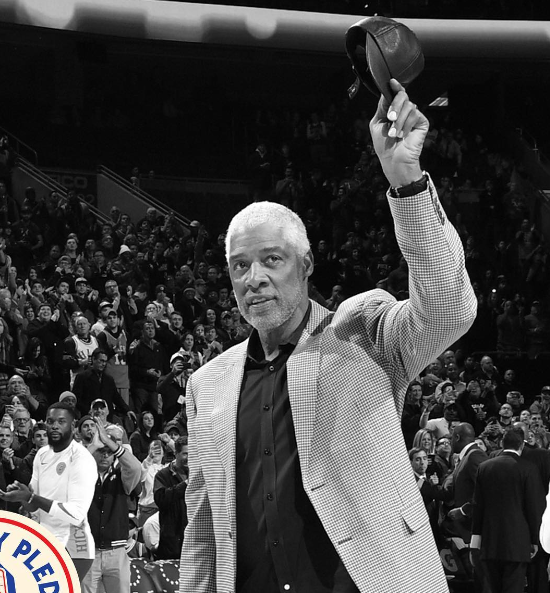Julius Erving had an affair with sports reporter Samantha Stevenson when he was still at the top of his game.
Alexandra Stevenson, who later became a tennis player, was the child who was born outside of a marriage. The basketball player tried to hide this part of his life, but it came out in a shocking way.
In 1979, “Dr. J” made it to his eighth straight All-Star game. He had already won two championships with the New York Nets of the ABA. In many ways, he was the face of the NBA and the sexiest thing about basketball. It wasn’t a big surprise that the basketball star had a relationship with someone.
Some people might not have been offended by how Alexandra Stevenson was conceived, but the way Julius Erving treated his daughter was very upsetting to those who knew the story.
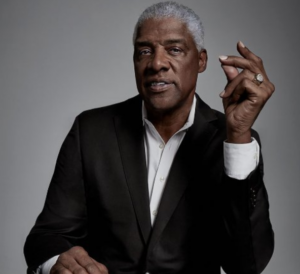
Table of Contents
Julius Erving avoided Alexandra Stevenson for almost 30 years
When Alexandra Stevenson made it to the semi-finals of Wimbledon in 1999, it was a big deal in the tennis world. She lost to Lindsay Davenport, an American who went on to win the whole thing.
When people wanted to know about Stevenson’s background, they found out that she was the daughter of a former star for the Philadelphia 76ers.
When her father’s name was found out, Stevenson was already 19 years old. But the father and daughter didn’t meet for the first time until October 2008.
View this post on Instagram
The great Julius Erving, who basketball players go to for advice, wouldn’t talk to anyone or even acknowledge Alexandra Stevenson for almost 30 years.
ESPN’s “Reaching Out” showed a video of the emotional meeting. Stevenson reached out to “Dr. J” to learn more about him and ask for help because she wanted to get back into tennis.
According to reports, the two have patched up their relationship and now talk to each other often.
Also Read: Is Sports Analysts Mintzy Leaving Barstool? He Explains Bad Blood With President
Julius Erving: Bio
Julius Erving, whose full name is Julius Winfield Erving II and whose nickname is “Doctor J,” was an American college and pro basketball player who was one of the most colorful and exciting players in the 1970s and 1980s.1
He was born on February 22, 1950, in Roosevelt, New York, U.S. Erving played forward and was known for his fast breaks, balletic leaps toward the basket, and exciting slam dunks. He was 6 feet 6 inches (1.98 meters) tall.
Erving won a sports scholarship to the University of Massachusetts when he was in high school. In his two years there, he became one of only five college basketball players to ever average more than 20 points and 20 rebounds per game.
When he left Massachusetts after his junior year and joined the Virginia Squires of the American Basketball Association (ABA) in 1971, he was still mostly unknown.
After two years, he was sent to the New York Nets. In his five years in the ABA, Erving led the league in scoring three times, was the league’s Most Valuable Player the last three years, and led the Nets to championships in 1974 and 1976.
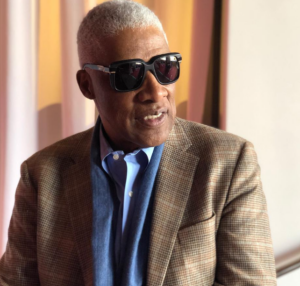
Julius Erving: Biographical Details
| Full Name | Julius Erving |
| Birthplace | East Meadow, New York, USA |
| Date of Birth | 22nd February 1950 |
| Height | 204cm |
| Age | 71 years (as per 2021) |
| Nickname | Dr. J |
| Parent | Julius Erving (father) Callie Mae Erving (mother) |
| Spouse/Relationship | Turquoise Erving (Ex-wife) Samantha Stevenson (Ex) Dorys Madden (Wife) |
| Kids | Jules Erving, Corey Erving (sons) Alexandra Stevenson, Justin Kangas, Julieta Erving, Jazmin Erving (daughters) |
| Sport | Basketball |
Julius Erving: Career
At the time, NBA rules said that teams couldn’t draft players who were less than four years out of high school. However, the ABA had a “hardship” rule that let players leave college early if they had to.2
Erving took advantage of the new rule by leaving Massachusetts after his junior year and signing a four-year contract with the Virginia Squires worth $500,000 over seven years.
Erving quickly became a force, and he became known for dunking hard and without care. As a rookie, he averaged 27.3 points per game, was named to the All-ABA Second Team and the ABA All-Rookie Team, led the ABA in offensive rebounds, and came in second to Artis Gilmore for the ABA Rookie of the Year Award.
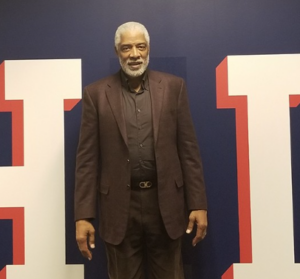
He led the Squires to the Eastern Division Finals, but they lost in seven games to the New York Nets, who were led by Rick Barry. In the end, the Nets made it to the finals, but they lost to the star-studded Indiana Pacers.
He was eligible for the 1972 NBA draft, and the Milwaukee Bucks picked him 12th overall in the first round. This would have put him on the same team as Kareem Abdul-Jabbar and Oscar Robertson. Before the draft, he made a deal with the Atlanta Hawks that was worth more than $1 million and included a $250,000 bonus.
After a disagreement with the Squires, in which he asked for a new deal, he signed with the Hawks. He found out that his agent at the time, Steve Arnold, worked for the Squires and talked him into signing a deal that was less than what the market would have been.
Also Read: Aly Wagner (Fox Sports Commentator): Meet His Wife Adam Eyre
Julius Erving: Early Life
Julius Erving was born on February 22, 1950, in Roosevelt, New York. During his 16-year professional basketball career, he was known for his style and grace on and off the court. His fans called him “Dr. J.”
At Roosevelt High School, where the nickname “Dr. J.” is said to have come from, he was a good player. Not much is known about how he got the name, but it is thought that a friend started calling him that after Erving called him “Professor.” Erving liked the name, and he kept it through college and into his professional life.
Erving went to the University of Massachusetts in 1968, even though not many big basketball programs were interested in him. He only played for the school for two years because freshmen couldn’t play on the varsity team, and he left before his senior year.
However, he left his mark on the program. He averaged 32.5 points and 20.2 rebounds per game at Massachusetts. At the time, he was one of only five players to ever average more than 20 points and 20 rebounds per game.
Julius Erving: ABA Career
Erving quit college in 1971 and signed as a free agent with the Virginia Squires of the American Basketball Association (ABA). As a forward, he quickly got used to the pro game. Erving averaged more than 27 points per game in his first season. He was named to the All-ABA Second Team and the ABA All-Rookie Team.3
Erving’s career took a hard turn in the spring of 1972. The Milwaukee Bucks of the National Basketball Association (NBA) picked him 12th overall, but he signed a contract with the Atlanta Hawks instead and worked out with the team before the season.
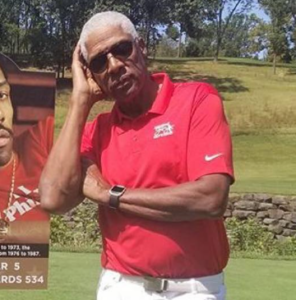
But the Squires quickly asked the court to stop him from playing in the NBA, and a panel of three judges agreed and sent him back to the ABA.
Erving was still the biggest star in his old league when he went back to it. He played for the Squires in 1972–73. He then joined the New York Nets and led them to championships in 1974 and 1976. In each of those years, he also won the award for Most Valuable Player.
People liked him not only because he scored, but also because of how he played the game. Erving was quick and athletic, and his game on the court included graceful spins, dramatic jump shots, and strong slam-dunks. In 1976, Erving’s last year in the ABA, which was also its last year, he won the ABA Slam Dunk contest.
This was the first time a professional league had ever held a dunk contest.
Julius Erving: Titles and Awards
Julius Erving was one of only five players in the history of the University of Massachusetts to average more than 20 points and 20 rebounds per game (he averaged 32.5 point and 20.2 rebounds).
After his first season in the ABA, Erving was named to the All-ABA Second Team and the All-ABA Rookie Team. In 1974 and 1976, when he played for the New York Nets, he led the team to two league titles and was named the league’s Most Valuable Player both years. Erving also won the ABA Slam Dunk Competition in 1976, before he left the league.
Erving had many good years while playing for the 76ers. He led the team to 11 trips to the playoffs, and in 1982-1983, he beat the Los Angeles Lakers in the NBA Finals. Erving was also named Most Valuable Player four times, and in 1993, he was inducted into the Hall of Fame.
Julius Erving: Facts
- Julius Erving was known as “Dr. J” when he was in high school.
- Erving played in more than 800 games, and on average, he scored 22 points per game.
- One of his most well-known plays is called the “Baseline Move.” In the 1980 NBA Finals, he did a great underhand scoop against the Lakers.
- The trophy for the BIG3 champion is called the Julius Erving.
- Erving is the basketball coach for Tri-State in the BIG3 league.
- In 1994, Erving was named one of the 40 most important athletes of all time by Sports Illustrated.
- ESPN said that Erving was one of the best athletes of the 20th century.
- Both the Brooklyn Nets and the Philadelphia 76ers have retired Erving’s number (#32 for the Nets and #6 for the 76ers).
- Erving is thought to be one of the best dunkers in basketball history because of how high he could jump.
Julius Erving: Family
Julius was born in East Meadow, New York, to Christian parents, Julius Erving (father) and Callie Mae Erving (mother), who already had two other children. When Julius was only seven years old, his father died in a car accident. His mother was left to raise three kids on her own without any money.
In 1972, Julius married Turquoise Erving. They were lucky to have four children. One of his sons, Corey, was found dead in his car in a pond when he was 19 years old. In 1979, he had a secret relationship with a sports reporter named Samantha Stevenson.
Their daughter, Alexandra Stevenson, went on to become a famous tennis player. Later in 2008, Julius and Alexandra, who was his daughter, started going out together.
In 2003, he had a second child with a woman named Dorys Madden, outside of his marriage to Turquoise. After that, he and Turquoise Erving got a divorce in 2003. Julius married Dorys Madden in 2008. They are lucky to have three children.
Read More: Salary Of Michael Vick At Fox Sports: Where Is He Now?
